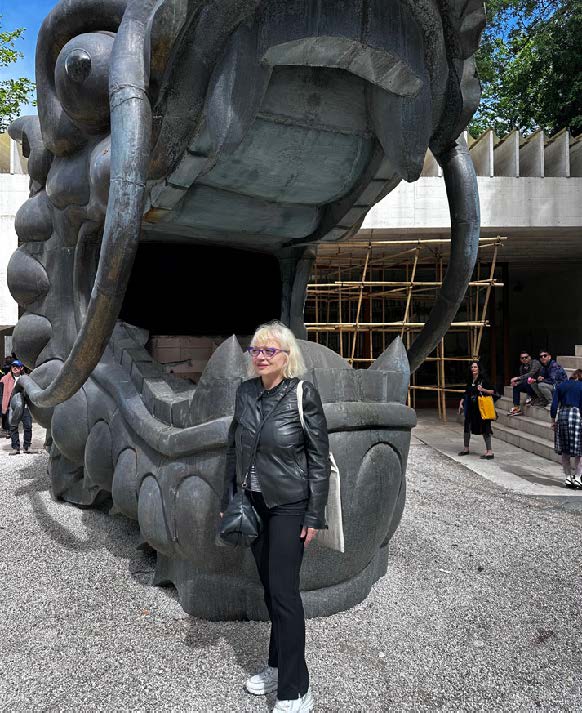
The 60th International Art Exhibition, titled “Stranieri Ovunque – Foreigners Everywhere,” open to the public until Sunday, November 24, 2024, at the Giardini and the Arsenale, is curated by Adriano Pedrosa and organized by La Biennale di Venezia. The title of the 60th Venice Biennale is drawn from a series of works started in 2004 by the collective Claire Fontaine: neon sculptures in different colors spell “Foreigners Everywhere” in an increasing number of languages. The phrase originates from the name of a Turin-based collective who fought racism and xenophobia in Italy: Stranieri Ovunque.
The context of the work is a world rife with multifarious crises concerning the movement and existence of people across countries, nations, territories and borders, reflecting the perils and pitfalls of language, translation, nationality, expressing differences and disparities, conditioned by identity, nationality and race.
Pedrosa explains that Stranieri Ovunque has several meanings. Firstly, “wherever you go and wherever you are you will always encounter foreigners: they/we are everywhere. Secondly, that no matter where you find yourself, you are always truly, and deep down inside, a foreigner.”
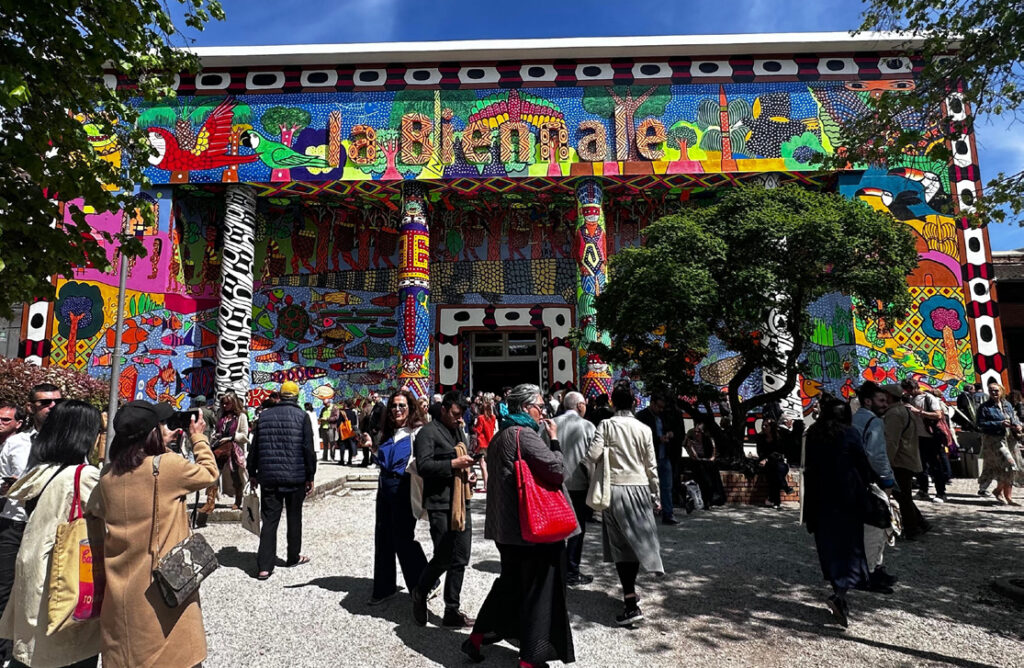
The exhibition presents 331 artists and collectives who have lived or currently live in 80 countries, including Hong Kong, Palestine and Puerto Rico, reflecting how artists have always traveled and moved for a wide variety of reasons. The primary focus of the Venice Biennale 2024 is therefore on those artists who are foreigners, immigrants, expatriates, exiles or refugees, particularly those who move between the Global South and North.
There are two prominent themes that resonate this year. The first is textiles, a medium explored by numerous artists showing a deep appreciation for craftsmanship, tradition, and the handmade, with techniques that have often been considered unconventional or foreign within the narrow arena of the fine arts. The second recurring theme centers around families and heritage, many by First Nation’s artists such as Archie Moore of the Australian Pavilion. Moore’s installation Kith and Kin, is a genealogical chart spanning 2,400 generations and some 65,000 years, tracing his Kamilaroi and Bigambul roots, representing some of the oldest continuously living cultures today. His intentional gaps denote the negative impact of “massacres, diseases and the deliberate destruction of records.”
Of the 88 national participants showcasing their work, four countries—Republic of Benin, Ethiopia, Democratic Republic of Timor-Leste, and United Republic of Tanzania—are participating in the Biennale Arte for the first time. Additionally, the Republic of Panama and Senegal will be debuting their own pavilions.
The Italian Pavilion, expanding on the foreigners theme, presents a project called Due Qui/To Hear. The title is a play on homophones “two here” (due qui) and “to hear.” The implication is that hearing or better listening or “lending an ear” could be a tool for self-improvement for the whole world. The installation, that includes sculptures, sounds and performances, provides a fully immersive experience and the opportunity to practice listening.
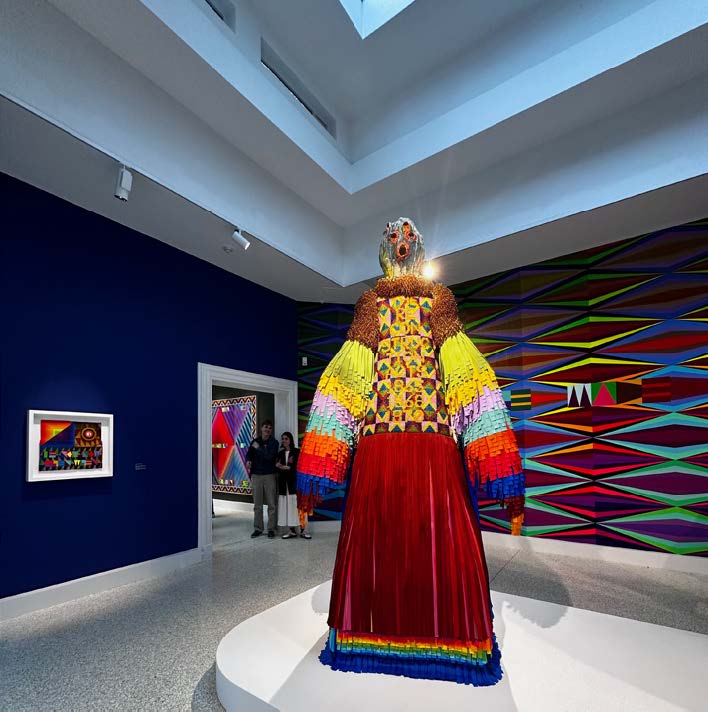
The Holy See Pavilion is also an impactful translation of the foreigners theme, set in the Giudecca Women’s Detention Home, an operational female prison. Everyone is a foreigner here. The title Con i miei occhi (With my eyes) is taken from a fragment of poetry that echoes an ancient sacred text and an Elizabethan poem. “I do not love thee with mine eyes” (Shakespeare, Sonnet 141) resonates with 42:5 of the Book of Job: “now mine eye seeth thee.” Artists and poets together with the female prisoners have created numerous installations with words and images and include dances, films, performances and workshops. The exhibition is accessible by reservation only and visits are guided by prisoners. The voyeurism of seeing prisoners in their environment, is juxtaposed against the expected and desired voyeurism of art. It brings together two worlds which are often alien or foreign to each other, encouraging a multifaceted dialogue between the two as encouraged by Pope Francis. The project aims to focus on human rights and hearing the voice of those marginalized by defying prejudice and convention.
Among the other pavilions, notable mentions include the United States, curated by Jeffrey Gibson, The space in which to place me. Jeffrey Gibson has forged an interdisciplinary practice and hybrid visual language that draws from American, Indigenous, and queer histories, with references to popular subcultures, literature, and global artistic traditions.
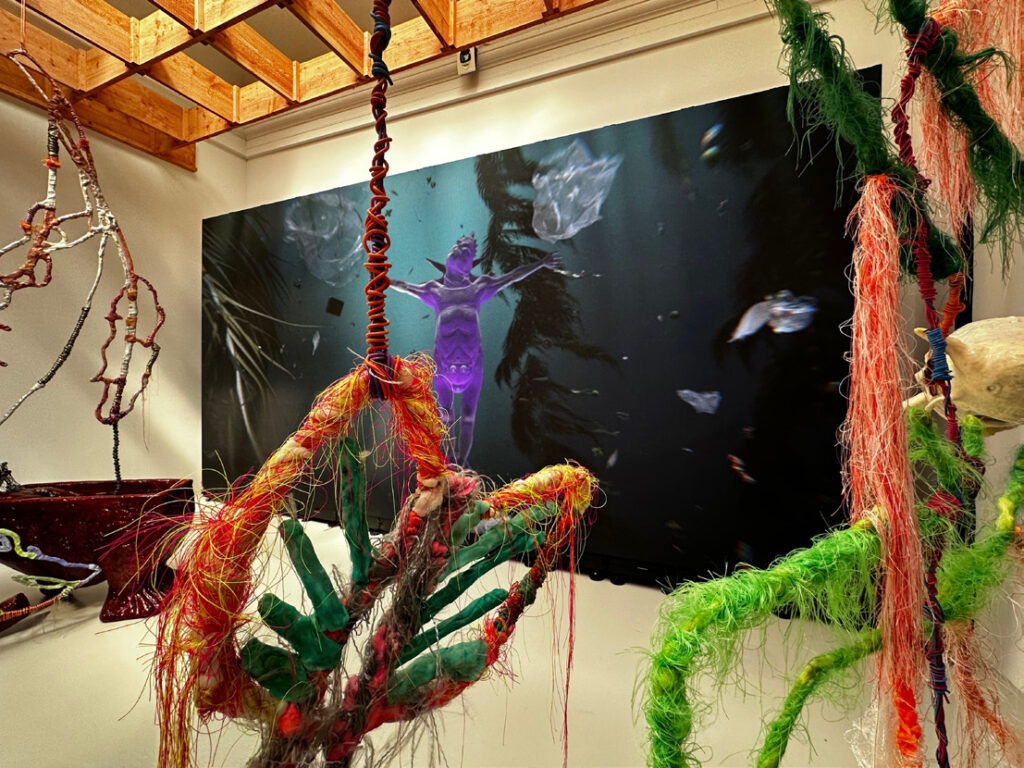
The French Pavilion, curated by Julien Creuzet, starts with a poem “Attila cataracte ta source aux pieds des pitons verts finira dans la grande mer gouffre bleu nous nous noyâmes dans les larmes marées de la lune.” Translated into English “Attila cataract your source at the feet of the green peaks will end up in the great sea blue abyss we drowned in the tidal tears of the moon.”
The description for the installation explains that the sight of “the matoutou falaise (a tarantula spider) is a gift when it appears in dense forests, on the bark of the Zamana trees or the rocks of the Martinique shores” (where Creuzet is from). They suggest that “it requires a deep connection to the environment; a gaze that sweeps the contours and glides over textures.” It is about appearances and disappearances, what is given, protected, and also unseen.
It is true that wherever you go and wherever you are you will always encounter foreigners: they/we are everywhere.
This way of seeing is undoubtedly what Julien Creuzet strives to offer through the experience of his work.
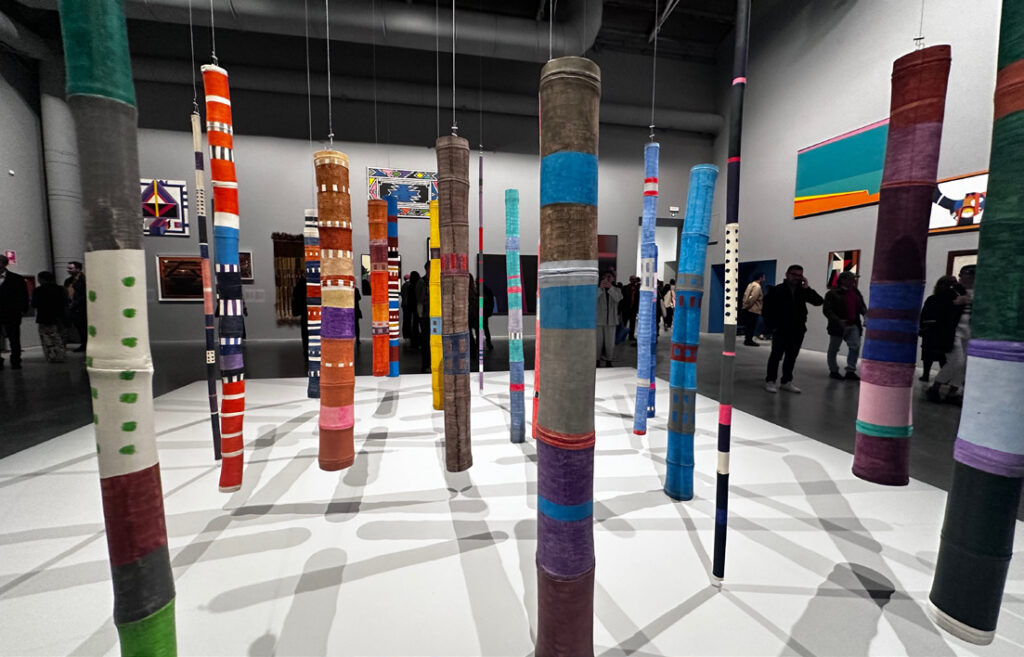
The German Pavilion, titled Thresholds, curated by Çağla Ilk has invited artists Michael Akstaller, Yael Bartana, Robert Lippok, Ersan Mondtag, Nicole L’Huillier, and Jan St. Werner to navigate the verge, the gradation, the boundary. Starting from alternative readings of history and the future, the contribution extrapolates realms of experience from the liminal. Thresholds is about space, moving through a house, a building but also encountering the world through it. It is about passages, tunnels, and about how space gives rise to meanings, particularly from culture to culture, ethnic group to ethnic group, and how communities settle in places that are often inhospitable, and often incarcerate or expel them. After all, to speak of space is to speak also of borders.
We cannot forget the absence of Russia this year, the outcry over Israel’s shuttered pavilion, the petition to exclude the Islamic Republic of Iran from the event: the international situation is inflaming the debate at the 60th Venice Biennale.
Art should be a territory not of conflict but of peace even if we know that it feeds on the present, but the aim is to see beyond and write new scenarios for human beings.
The trend of recent years at the Venice Biennale, has been to not favor a single artist, but rather support the concept of the collective. The curator becomes the ace, the spokesperson, of the country, to explain the politics and national thinking in their artistic language. However, apart from the examples I have mentioned this year, few really stand out for original language. Is it because we have seen everything? Perhaps the challenge is still open. Let us trust in the upcoming biennials and see if the music changes. G&S
Photographs by Stefania Carrozzini

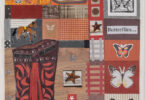
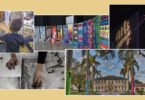
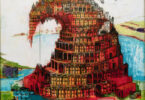
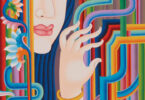
Leave a Comment